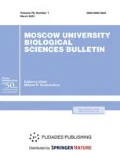Abstract
Music with embedded binaural beats (BBs) is a promising noninvasive tool for insomnia treatment. This work tests the hypothesis of “entrainment” effect of that kind of music on human brainwaves as a physiological mechanism of sleep improvement. The spectrum of auditory steady state response has been compared in the group of 21 subjects during daytime sleep onset, with music embedded with BBs of 2 and 4 Hz (stimulus condition) and without any stimulus (control condition). Significant difference in auditory steady state response power has been found between conditions at 14 Hz (“sleep spindle” frequency). However, no significant difference has been found at frequencies of 2 and 4 Hz embedded to add a somnogenic feature to the music stimulus according to the hypothesis tested. The results obtained do not support the hypothesis of “entrainment” effect of the stimulus examined on sleep; yet they support the conclusion made in the previous authors’ paper that it improves daytime sleep quality.

Similar content being viewed by others
REFERENCES
Trahan, T., Durrant, S.J., Mullensiefen, D., and Williamson, V.J., The music that helps people sleep and the reasons they believe it works: A mixed methods analysis of online survey reports, PLoS One, 2018, vol. 13, no. 11, e0206531.
Picard, L.M., Bartel, L.R., Gordon, A.S., Cepo, D., Wu, Q., and Pink, L.R., Music as a sleep aid in fibromyalgia, Pain Res. Manage., 2014, vol. 19, no. 2, pp. 97–101.
Jespersen, K.V., Koenig, J., Jennum, P., and Vuust, P., Music for insomnia in adults, Cochrane Db. Syst. Rev., 2015, no. 8, CD010459.
Morin, C.M., LeBlanc, M., Daley, M., Gregoire, J.P., and Merette, C., Epidemiology of insomnia: Prevalence, self-help treatments, consultations, and determinants of help-seeking behaviors, Sleep Med., 2006, vol. 7, no. 2, pp. 123–130.
De Niet, G., Tiemens, B., Lendemeijer, B., and Hutschemaekers, G., Music-assisted relaxation to improve sleep quality: Meta-analysis, J. Adv. Nurs., 2009, vol. 65, no. 7, pp. 1356–1364.
Feng, F., Zhang, Y., Hou, J., Cai, J., Jiang, Q., Li, X., Zhao, Q., and Li, B-A., Can music improve sleep quality in adults with primary insomnia? A systematic review and network meta-analysis, Int. J. Nurs. Stud., 2018, vol. 77, pp. 189–196.
Wang, C.-F., Sun, Y.-L., and Zang, H.-X., Music therapy improves sleep quality in acute and chronic sleep disorders: A meta-analysis of 10 randomized studies, Int. J. Nurs. Stud., 2014, vol. 51, no. 1, pp. 51–62.
Dickson, G.T. and Schubert, E., How does music aid sleep? Literature review, Sleep Med., 2019, vol. 63, pp. 142–150.
Oster, G., Auditory beats in the brain, Sci. Am., 1973, vol. 229, no. 4, pp. 94–103.
Shumov, D.E., Arsen’ev, G.N., Sveshnikov, D.S., and Dorokhov, V.B., Comparative analysis of the effect of stimulation with a binaural beat and similar kinds of sounds on the falling asleep process: A brief note, Moscow Univ. Biol. Sci. Bull., 2017, vol. 72, no. 1, pp. 33–36.
Jirakittayakorn, N. and Wongsawat, Y., A novel insight of effects of a 3-Hz binaural beat on sleep stages during sleep, Front. Hum. Neurosci., 2018, vol. 12, 387.
Shumov, D.E., Yakovenko, I.A., Dorokhov, V.B., Sveshnikov, D.S., Yakunina, E.B., Bakaeva, Z.V., Vinokurov, V.A., and Putilov, A.A., Napping between Scylla and Charybdis of N1 and N3: Latency to N2 in a brief afternoon nap can be reduced by binaural beating, Biol. Rhythm. Res., 2021, vol. 52, no. 2, pp. 227–236.
Shumov, D.E., Yakovenko, I.A., Alipov, N.N., Bakaeva, Z.V., Yakunina, E.B., Minyuk, A.N., Vinokurov, A.V., and Dorokhov, V.B., Influence of music containing binaural beats on the dynamics of daytime sleep, Zh. Nevrol. Psikhiatr. im. S.S. Korsakova, 2020, vol. 120, no. 2, pp. 39–44.
Nozaradan, S., Peretz, I., Missal, M., and Mouraux, A., Tagging the neuronal entrainment to beat and meter, J. Neurosci., 2011, vol. 31, no. 28, pp. 10234–10240.
Perez, H.D.O., Dumas, G., and Lehmann, A., Binaural beats through the auditory pathway: From brainstem to connectivity patterns, Eneuro, 2020, vol. 7, no. 2.
Gao, X., Cao, H., Ming, D., Qi, H., Wang, X., Wang, X., Chen, R., and Zhou, P., Analysis of EEG activity in response to binaural beats with different frequencies, Int. J. Psychophysiol., 2014, vol. 94, no. 3, pp. 399–406.
Pratt, H., Starr, A., Michalewski, H.J., Dimitrijevic, A., Bleich, N., and Mittelman, N., A comparison of auditory evoked potentials to acoustic beats and to binaural beats, Hearing Res., 2010, vol. 262, nos. 1–2, pp. 34–44.
Naumova, I.V., Gadaleva, S.V., and Pashkov, A.V., Stationary auditory potentials. Literature review, Ross. Otorinolaringol., 2018, no. 3, pp. 115–129.
Picton, T.W., John, M.S., Dimitrijevic, A., and Purcell, D., Human auditory steady-state responses: Respuestas auditivas de estado estable en humanos, Int. J. Audiol., 2003, vol. 42, no. 4, pp. 177–219.
Berry, R.B., Brooks, R., Gamaldo, C.E., Harding, S.M., Lloyd, R.M., Marcus, C.L., and Vaughn, B.V., The AASM Manual for the Scoring of Sleep and Associated Events: Rules, Terminology and Technical Specifications, Version 2.2, Darien, Illinois: American Academy of Sleep Medicine, 2015. https://www.aasmnet.org.
Funding
The study was financed from the state budget (no. AAAA-A17-117092040002-6) and supported by the Russian Foundation for Basic Research (grant no. 19-013-00747a).
Author information
Authors and Affiliations
Corresponding author
Ethics declarations
Conflict of interests. The authors declare that they have no conflict of interests.
Statement of compliance with standards of research involving humans as subjects. The study complied with the ethical standards of the World Medical Association’s Declaration of Helsinki “Ethical Principles for Scientific Medical Research Involving Human Subjects,” as amended in 2000, and was approved by the ethical committee of the Institute of Higher Nervous Activity and Neurophysiology, Russian Academy of Sciences. Informed consent to participate in the study was signed by each participant.
About this article
Cite this article
Shumov, D.E., Tkachenko, O.N., Yakovenko, I.A. et al. Auditory Steady State Response to the Music with Embedded Binaural Beats during Daytime Sleep. Moscow Univ. Biol.Sci. Bull. 76, 41–45 (2021). https://doi.org/10.3103/S0096392521020061
Received:
Revised:
Accepted:
Published:
Issue Date:
DOI: https://doi.org/10.3103/S0096392521020061



